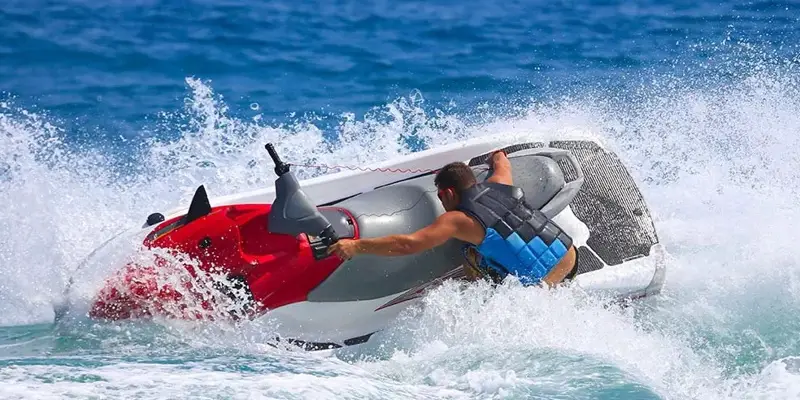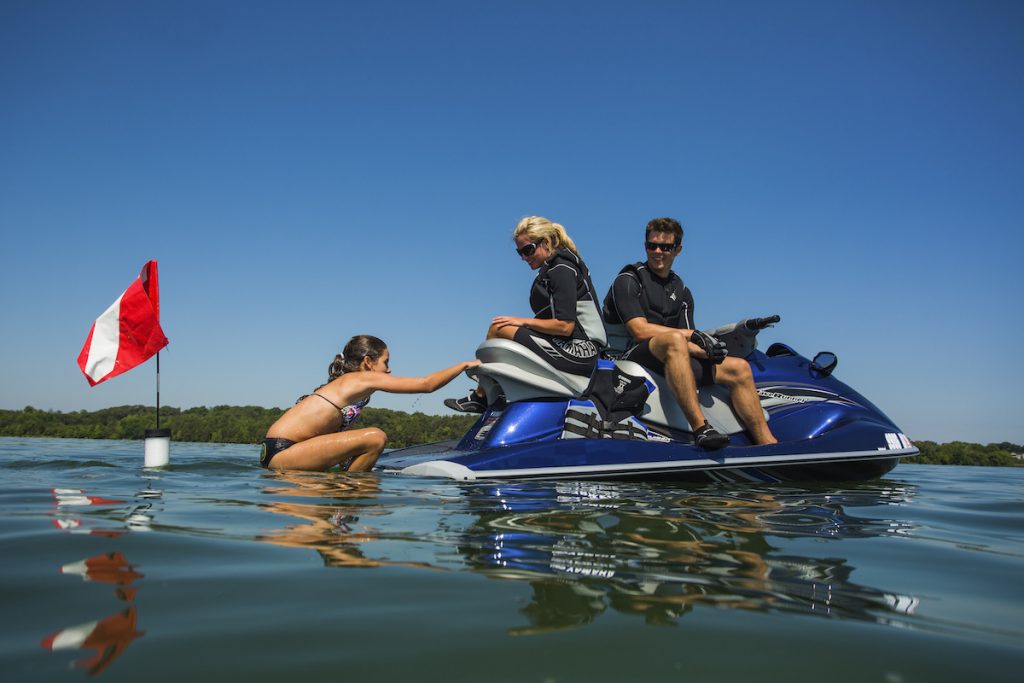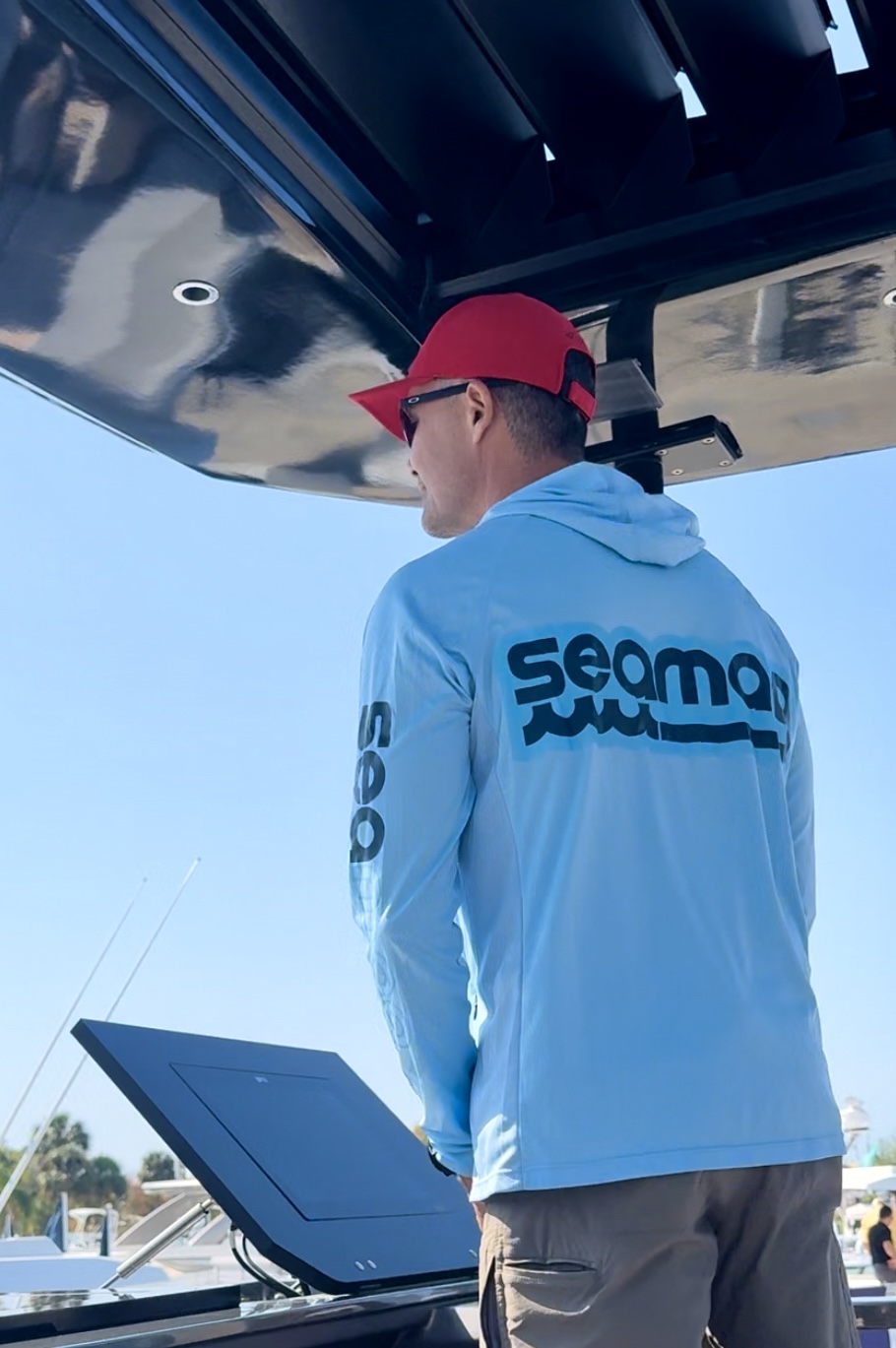When Reboarding a Personal Watercraft (PWC) After a Fall: Proper Rolling Techniques Explained
Reboarding a personal watercraft (PWC) after a fall can be a challenging experience, especially for beginners. Falling off a PWC is not uncommon, due to the inherent instability of these vehicles when operating at high speeds or navigating through rough waters.

It is essential to know the proper technique for safely rolling and reboarding the PWC to prevent accidents and ensure the well-being of the rider.
Understanding the dynamics of a PWC is a crucial aspect when it comes to reboarding, as each model may have a unique design, buoyancy characteristics, and recommended procedures.
When reboarding after a fall, it is essential to first locate the reboarding instructions on the vehicle’s label or consult the owner's manual for the correct rolling direction. This will provide the necessary guidance on how to return the PWC to its upright position safely.

Key Takeaways
- Safely reboarding a PWC after a fall requires knowledge of the proper technique and attention to the vehicle's specific rolling direction.
- Consult the reboarding instructions either on the label or in the owner's manual to ensure the correct procedure is followed.
- Understanding the dynamics of the PWC will aid in safely navigating both the reboarding process and preventing potential accidents.
Understanding PWC Dynamics
Craft Design and Stability
Personal watercraft (PWC) are unique in their design, which directly affects their stability and the riding experience. Most PWCs have a compact, lightweight construction with a low center of gravity, allowing for better maneuverability and easier reboarding after falling off. However, this also makes PWCs more susceptible to tipping over due to their relatively shallow draft and narrow hull design.
Riders must understand their PWC's dynamics to ensure proper handling and safety while riding. One key factor in maintaining stability is the rider's body position and weight distribution. Leaning into turns and maintaining a low center of gravity can help keep the PWC stable during sharp maneuvers.

The Role of Engine and Thrust
In a PWC, the engine is responsible for driving the jet pump, which in turn generates thrust to propel the vehicle forward. The jet pump draws in water through an intake grate located at the bottom of the PWC and forces it out through a nozzle at the rear of the craft, creating forward motion.
Most PWC engines are equipped with an engine cut-off switch. This safety feature shuts off the engine if the rider falls off to prevent the PWC from continuing to move without a rider. When reboarding a PWC, you must remember that the engine and thrust play a pivotal role in the process.
To reboard a PWC:
- Ensure the engine is off and the engine cut-off switch is engaged.
- Approach the PWC from the rear, where the boarding platform is typically located.
- Grab the rear handle and use the boarding step (if available) to climb back onto the swim platform.
- Properly reattach the engine cut-off switch lanyard and reposition yourself on the seat.
Understanding the various factors involved in PWC dynamics will ensure that riders can safely reboard their craft and continue their riding adventure with confidence.
Preparation for Reboarding
Safety Equipment
Before attempting to reboard a personal watercraft (PWC) after a fall, make sure you have the proper safety equipment in place. The most crucial piece of equipment is the safety lanyard or engine cut-off switch, which ensures that the PWC's engine stops running when the rider falls off. This prevents the watercraft from moving away and making reboarding more difficult.
Another essential safety item is a personal flotation device (PFD). Wearing a PFD not only increases the rider's buoyancy in the water but also provides additional support and stability during the reboarding process, especially in rough or choppy conditions.
Operator Readiness
Before attempting to reboard the PWC, riders should familiarize themselves with the proper reboarding techniques to make the process quick, safe, and efficient. Sea-Doo recommends practicing in calm water conditions to gain experience and confidence.
Here are some steps to follow for effective reboarding:
- Ensure the PWC is in the correct position (upright) and turned off.
- Approach the watercraft from the rear, following the manufacturer's guidelines.
- Grab the rear handle or any designated handhold.
- Pull yourself up onto the boarding step, placing one foot securely on it.
- Use your foot on the step and handhold to pull yourself up onto the swim platform.
- Once one knee is on the swim platform, carefully swing your other leg onto the watercraft and resume the seated position.
By following these steps and practicing the reboarding process ahead of time, PWC riders will be well-prepared for any situation in which they need to reboard their personal watercraft after a fall.
Reboarding Procedure
Approaching the PWC
When reboarding a Personal Watercraft (PWC) after a fall, make sure to approach the PWC from the correct direction, as indicated by the decal or owner's manual1. Ensure that you maintain a safe distance from the watercraft until you are ready to begin the reboarding process.
Rolling Technique
After you've fallen off the PWC and need to roll it upright, take note of the environmental factors2 that can influence this process. Rolling the PWC the right way is vital to avoid causing damage to it or risking injury.
Be sure to position yourself on the side of the PWC that corresponds with the reboarding technique mentioned in the owner's manual. Then, grab the edge of the PWC and use your body weight to help roll it back into the correct position.
From Water to Seat
Once the PWC is upright, you can proceed to reboard. Start by locating the rear grab handle3 at the back end of the saddle.
With one hand on the handle, pull yourself upward until you can place one foot on the boarding step. Utilize the step and the handhold to pull yourself further up, positioning your opposite knee onto the swim platform.
At this point, move cautiously from the swim platform to the seat, making sure your body is well-balanced and stable throughout the transition. Once securely seated, restart the PWC and continue with your activity.
Post-Reboarding Checks
After successfully reboarding a personal watercraft (PWC) following a fall, it's essential to perform some basic checks to ensure the PWC is safe and ready for continued operation. In this section, we will discuss the two major parts that need attention during post-reboarding checks: Engine and Fuel System, and Hull and Deck Inspection.
Engine and Fuel System
It's crucial to verify that the engine cut-off switch is securely attached and functioning properly. The engine cut-off switch serves to shut down the engine if the operator falls overboard, preventing the PWC from continuing to move uncontrolled.
Check for any visible damage to the engine, fuel lines, and connections that may have occurred during the fall.
Ensure that the fuel system is intact and that there is no leakage. Fuel leaks can lead to hazardous situations on the water.
Check the fuel tank for any cracks or punctures, and inspect the fuel lines for kinks, abrasions, or other signs of damage.
Hull and Deck Inspection
Examine the hull and deck of the PWC thoroughly to make sure there is no significant damage that could affect the watercraft's operation or safety. Look out for any cracks, chips, or dents on the hull that could compromise its structural integrity.
It's advisable to address any damage to the hull or deck as soon as possible.
Additionally, examine the PWC's deck to ensure that all fittings and attachments are secure and in place. Inspect the seating and handlebars to make sure they are firmly attached and functioning as they should.
Common Mistakes and Tips
Avoiding Capsizing During Reboarding
When reboarding a PWC after a fall, it's essential to avoid further capsizing to ensure safety and prevent potential damages. One common mistake is attempting to reboard from the side; instead, approach the PWC from the rear.
This approach helps stabilize the craft, as it has a lower center of gravity at the back. Additionally, remember to follow the proper technique indicated on the decal or owner's manual to prevent capsizing during reboarding.
- Tip 1: Approach from the rear of the PWC
- Tip 2: Follow the technique indicated in the owner's manual
Maintaining Balance
Maintaining balance during the reboarding process is crucial for safety and to prevent additional falls. When climbing back onto the PWC, use the rear grab handle and the boarding step to pull yourself up.
Instead of hopping back onto the seat, try sliding your knee onto the swim platform; this position allows for more stability.
When it comes to balance and stability on PWC, here are some key safety tips:
- Keep a Low Center of Gravity: To keep a low center of gravity, bend your knees and lean slightly forward when standing or kneeling on the PWC.
- Hold Onto Supports: Hold onto supports such as the grab handle and boarding step while climbing back onto the PWC.
- Use Slow, Controlled Movements: When reboarding, move slowly and deliberately to maintain balance during the process.
Safety and Regulatory Compliance
Safety Guidelines and Best Practices
When reboarding a personal watercraft (PWC) after a fall, it is essential to follow certain safety guidelines to ensure a safe and smooth experience. One of the key guidelines is to wear a personal flotation device (PFD) or lifejacket at all times. This helps to keep the rider afloat and minimize the risk of drowning.
In addition to wearing a lifejacket, it's essential to familiarize oneself with the specific reboarding instructions provided by the PWC manufacturer.
These instructions can usually be found in the owner's manual or on a label affixed to the watercraft. Following the manufacturer's guidance ensures that the PWC is rolled and reboarded in the safest and most efficient manner.
To minimize fuel consumption and ensure a safe return to shore, it is also advisable to follow the 1/3 rule. This rule recommends using 1/3 of the fuel tank to reach the destination, 1/3 for the return journey, and reserving the final third as a safety measure.
Legal and Regulatory Considerations
PWC operators must also comply with all legal and regulatory requirements in their jurisdiction. This may include obtaining a valid boating license, registering the watercraft, and adhering to local speed limits and no-wake zones.
Before venturing out on a PWC, it's important to review the warnings and instructions provided on the watercraft's warning sticker. This sticker contains crucial information on the PWC's safe operating procedures and may also highlight specific local legal requirements.
Frequently Asked Questions
What is the proper technique for reboarding a personal watercraft after falling off?
When reboarding a personal watercraft (PWC) after a fall, it's important to approach the PWC from the correct direction, as indicated by the decal or owner's manual. Pull yourself up and kneel on the boarding platform, then slide onto the seat. Attach the lanyard to your wrist and lifejacket to restart the engine. By following these easy steps, you can safely reboard a PWC.
What safety measures should you take when rolling a personal watercraft back upright?
Before reboarding your PWC, ensure the engine is stopped. If you were the driver, a fall should have disconnected the safety lanyard, stopping the engine.
Always approach the watercraft from the appropriate side (as per the owner's manual). Hold onto the rear grab handle or another secure spot to maintain proper balance during the reboarding process. Take your time and avoid rushing to minimize the risk of injury.
Is there a recommended side to roll a personal watercraft onto when getting back on?
For many PWC models, the recommended side for reboarding is marked on the watercraft with a decal or indicated in the owner's manual. Generally, reboarding from the stern using the boarding platform is the most stable and secure method.
Are there any specific steps to follow when reboarding a personal watercraft to ensure stability?
First, pull yourself upward using the rear grab handle, getting your foot onto the boarding step. Then, use the step and handhold to pull yourself up, placing your opposite knee on the swim platform. By distributing your weight evenly and moving slowly, you'll achieve better stability while reboarding.
What are the guidelines for safely reentering a personal watercraft after capsizing?
After capsizing, ensure your PWC is right-side up, and then follow the proper reboarding steps. This procedure typically involves approaching the PWC from the correct direction, pulling yourself up onto the boarding platform, and sliding onto the seat. Before starting the engine again, attach the safety lanyard to your wrist and lifejacket.
What precautions should be considered to avoid injury while reboarding a personal watercraft?
To minimize the risk of injury, always approach the PWC from the appropriate side, following the manufacturer's specifications. Utilize the rear grab handle, boarding step, and swim platform to maintain balance during the reboarding process, and take it slow.
Double-check the safety lanyard is properly attached, and be mindful of the surrounding water conditions.
Charlie is Editor-in-Chief of Sea Magazine







